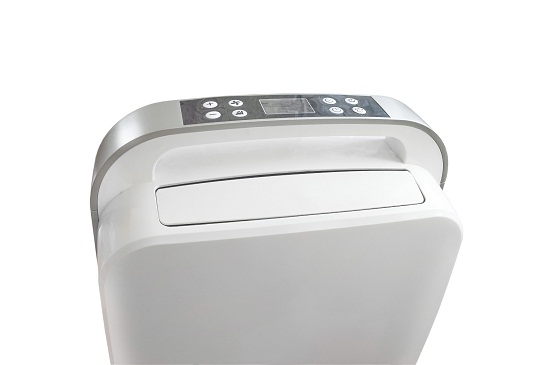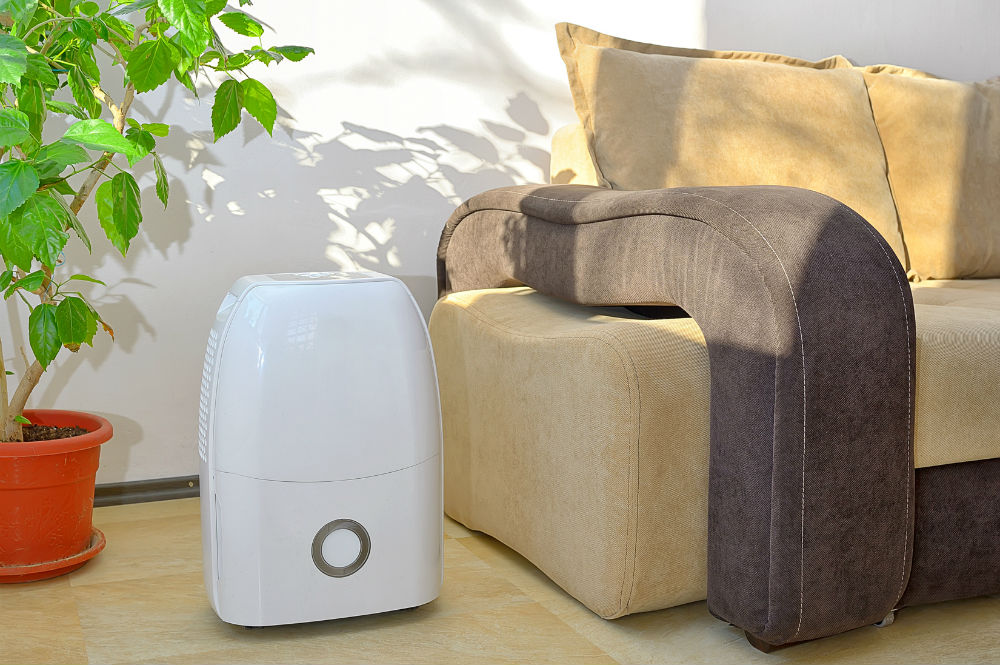So, your dehumidifier worked great for months, easing your allergies and keeping your home dry and cool.
But all of a sudden, you find your dehumidifier runs but no longer collects water.
What’s going on?
We know this can be a frustrating issue, and you’re asking yourself, why is my dehumidifier not accumulating water?
In this article, we discuss the likely causes of a dehumidifier no longer collecting water – and walk you through a few proven ways to diagnose and fix the problem.
What’s Going on with My Dehumidifier?
Dehumidifiers remove humidity from the air and leave the house dry and easier to reside in.
There are two main types of dehumidifiers: desiccant and refrigerant.
Refrigerant dehumidifiers contain refrigerated coils in them, which eliminate humidity by cooling the air which condenses & removes water vapor.
When the moist air flows through the dehumidifier, the condensation is caught on the coils.
Due to this, air that is driven back into the room is warm but dry.
Desiccant dehumidifiers, on the other hand, use a chemical desiccant to eliminate the humidity from the air. The chemical bonds with moisture from the air.
Once removed, they discharge the dehumidified air back into the room.
Below are a couple of reasons why a dehumidifier may not be collecting water.
Not Enough Moisture in the Air

If the relative humidity level in the home is low enough, the dehumidifier will not have humidity to collect.
The relative humidity of a home is reliant upon the air temperature indoors and outdoors. If the temperature is too low compared to the humidity level, there’ll be little to no extra moisture for the dehumidifier to collect.
This can happen after the first few weeks or months of using your unit. During the first couple of months, you may have noticed it accumulated a whole lot of moisture. This is because it collected all of the excess water from the walls, ceilings, and things in the general area.
After that work has been done, however, all that’s remaining for the dehumidifier is to maintain and regulate the amount of humidity. There may not be much humidity left from the air, so the dehumidifier may quit accumulating water at some point.
Temperature Is Too Low
Several kinds of dehumidifiers must operate a high enough temperature or they will stop operating correctly.
When the temperature reaches around 65 degrees Fahrenheit, the coils inside the machines will freeze and ice will form.
Simultaneously, if the temperature inside the room is too low, it’s harder for the dehumidifier to eliminate moisture from the air. If the temperature is set to 60 levels Fahrenheit, the humidity will probably not become lower than 60%.
For basements and other areas which are predicted to have lower temperatures, there are various kinds of dehumidifiers that you can buy. These devices can work in temperatures that are nearly as low as 30 degrees Fahrenheit.
Wrong Sized Dehumidifier
It may be the scenario in which you have bought a dehumidifier with greater water removal capacity than you need. A few machines are made to function for just a single room and a few goals for the whole house.
People who have a more compact dehumidifier can eliminate about 30-pints of water each day. It can eliminate more than 90-pints of water every day for homeowners who have a bigger one.
Placing a sizable dehumidifier in a little room may lead to less water collection than you’re expecting. It’s vice versa for small dehumidifiers in huge spaces; these will probably collect far more water than was expected.
In some cases, the dehumidifier runs but does not accumulate water. And that is a sure indication you’ve got the wrong size. If you’re having trouble deciding what size dehumidifier is perfect for you, you will find useful charts online to guide you.
They’re based on the size of the field for which you would like the dehumidifier. Instead, you can go to the store and ask a sales representative if you’re uncertain. It’s always better to ask than to receive the wrong product.
Parts are Malfunctioning
There are many unique parts of a dehumidifier that all come together to get a result. This means there are lots of parts that could break down and block the whole machine’s functioning.
Below is a list of a few examples of components that may break down and will have to be replaced if you would like to keep using your toaster.
If the compressor has failed, you will possibly hear a buzzing sound every once in a while. After the compressor stops working, the humidity will grow, and moisture won’t be collected.
When the coils begin leaking refrigerant outside, it means you’ve got a leak in the refrigeration unit. The coils will stop absorbing the dampness when air passes through the system.
The condenser or filters may be obstructed. See to determine if you’re able to wash out any of the filters to spare the airflow in the dehumidifier.
If the Humidistat isn’t functioning properly, it will show the erroneous humidity level of the region. Or it won’t indicate the dehumidifier to function at a set humidity level. You can try and fix this issue or record the part and find a replacement.
Common Dehumidifier Problems

Dehumidifier not functioning or collecting water? Here are some quick things you can think about before it is time to break out your resources. These apply to both desiccant-based systems and compressors of any size and from any manufacturer.
Moisture Levels: A dehumidifier is intended to extract and collect excess humidity from the air as required. During specific times, the air may stop collecting water since there is not enough moisture in the atmosphere. That might be because it is doing its job correctly or because of temperature fluctuation locally.
Ability: One frequent problem homeowners confront is that dehumidifiers do not collect water. It has nothing to do with component failures or humidity levels. If you don’t pick the correct size system for your house, it won’t have the ability to manage the humidity. If you’re unsure what size you need, take a look at our manual on dehumidifier capacities.
Placement: Improper placement may also affect water set from a dehumidifier. While you will have to consult your user guide, systems require enough clearance to operate properly in your dwelling. Moving a dehumidifier may substantially affect how well it works if it was not installed correctly.
Care: If you would like to make sure your system is functioning at optimal efficiency, you would want to do routine maintenance. It’s easy to overlook, but dust and clogged drains will have an impact on the water set in a dehumidifier. Ensure nothing is obstructed or blocked on your system, and change any filters required by the manufacturer.
CONCLUSION
When your dehumidifier stops accumulating water, it might not always be a bad thing. The very best case is that there’s not enough humidity in the atmosphere at that particular time.
To know if this is the case, you could wait for a day that brings more humidity than normal. Assess if the dehumidifier begins functioning normally again. If it does not, you will possibly have to troubleshoot the matter and replace a part.
I’m a degreed ME (mechanical engineer) who is passionate about machines of all kinds. I created MachineWonders.com as a way to connect with others who love machines like me – or need help choosing one for their needs, application, or situation.



